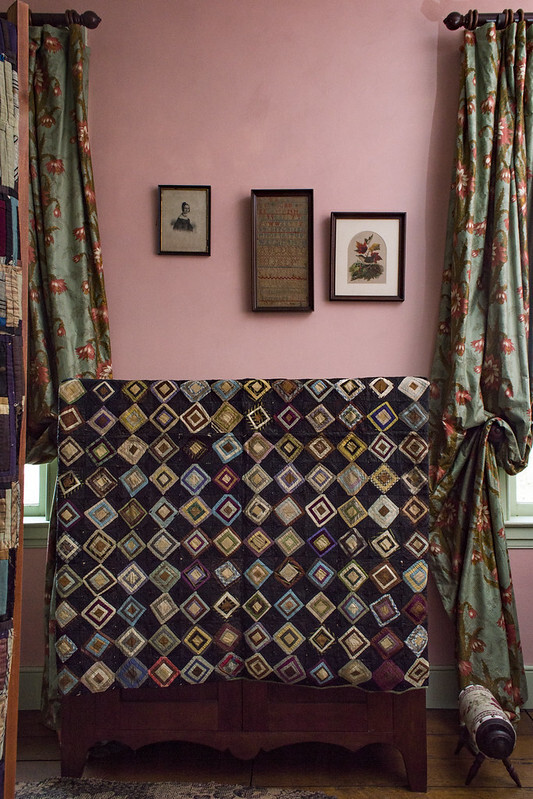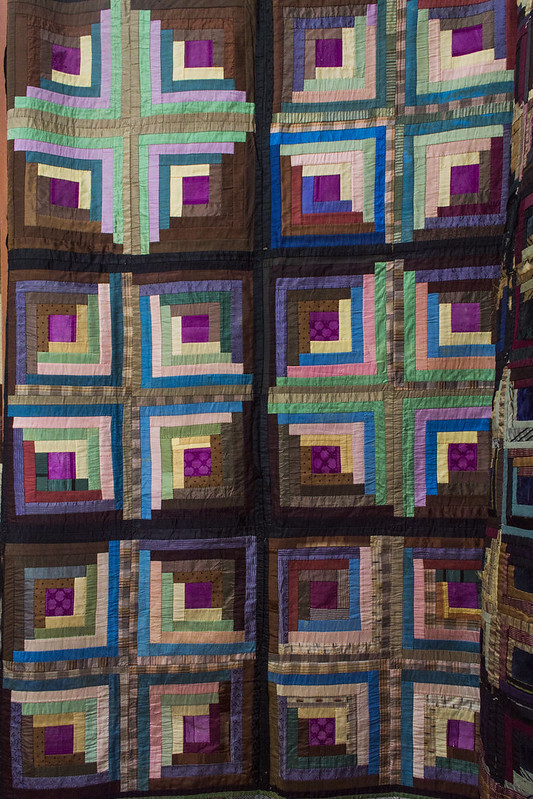Log Cabin Quilts
The Log Cabin quilt pattern is one of the most beloved, recognizable, and versatile quilt designs. The variety of designs, known by many different pattern names, including White House Steps, Court House Steps, eight-sided Pineapple, Barn Raising, and Sunshine and Shadow, differ in the manner in which the “logs” have been arranged.
Because the design is made up of such small, regularly-shaped cut pieces, it lends itself well to a patchwork quilting approach. It is an economical design that could make use of off-cuts and scraps from other sewing projects; a practice that often wasn't possible in quilt patterns that use larger and irregularly-shaped pieces.
Log Cabin quilts first became popular in the United States in the 1860s, during the time of the Civil War and the presidency of Abraham Lincoln. The block name may even be associated with Lincoln, who is said to have risen from a log cabin to the White House.
Wylie House Museum has three variations of the Log Cabin quilt pattern. Take a moment to explore each creative interpretation of the simple, basic formula.
Log Cabin, “White House Steps” Variation
1850-1875
The quilt top is made of silk and satin hand-stitched onto a white cotton-liner that is not visible. Each block contains a centered diamond or square set on point with surrounding colorful fabric strips that grow smaller toward the center. Dark blue strips of satin are used to fill in the corners of the block. The quilt backing is a white cotton, attached at the edges by ribbons of green satin that were machine-sewn on.
Log Cabin, “Courthouse Steps” Variation
The quilt was made by Mary E. Dunn Maxwell, the mother of nine children and the wife of Dr. David H. Maxwell, known as the “Father of Indiana University” because of his successful efforts in lobbying to have the State Seminary located in Bloomington.
The silks are still in excellent condition and show the quality and beauty of fabric available in the 19th century. This quilt is hand pieced, though the back seams and binding having been machine-sewn.




